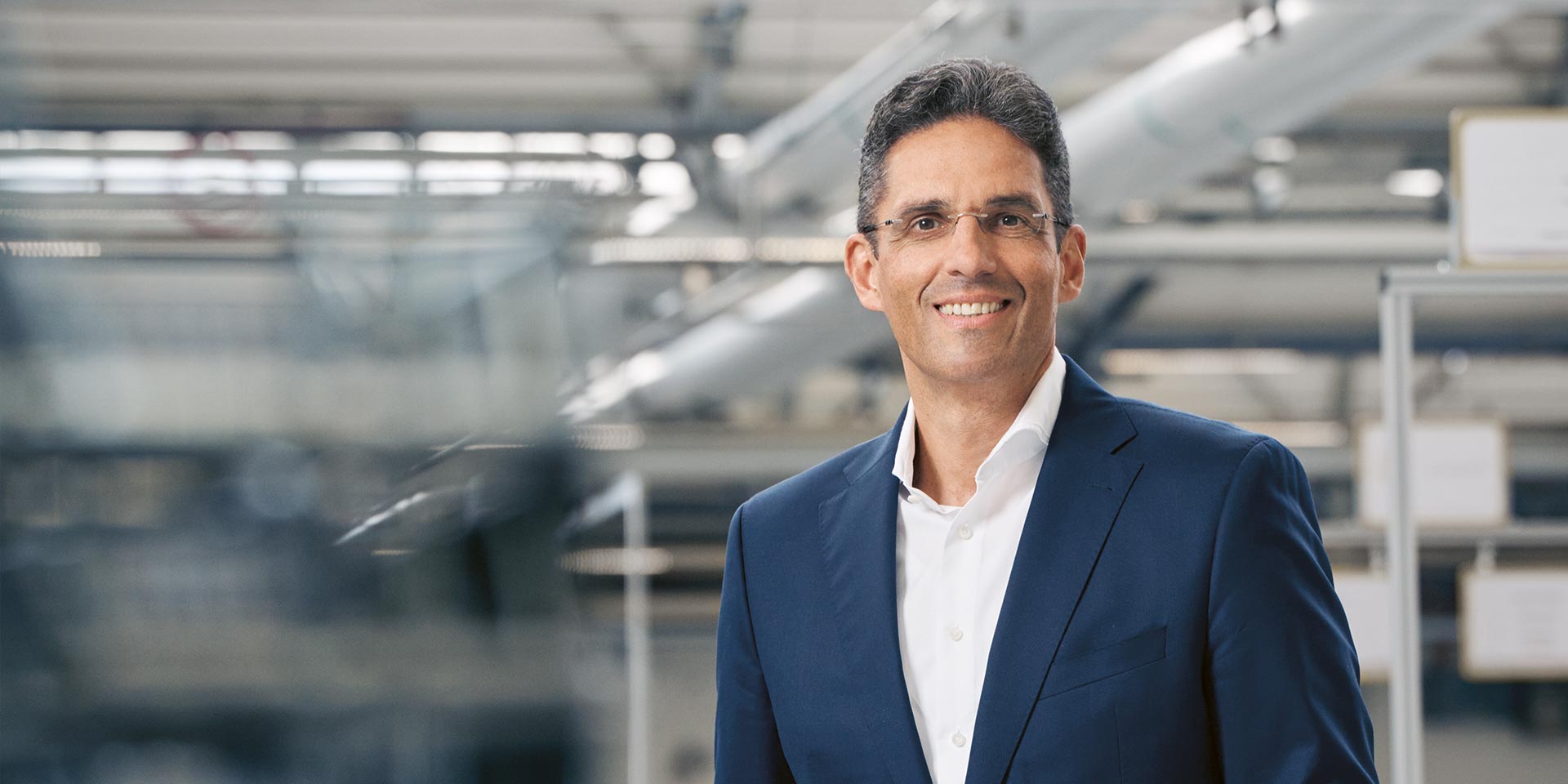Automotive – Transforming toward the new mobility

In 2022, the Automotive Division not only struggled with difficult market conditions, but also faced the largest structural transformation in automotive history. The track for tomorrow’s mobility must be set up today.
“The Automotive Division is working intensively on new products and projects to successfully shape the transformation to e-mobility.”
and Member of the Executive Board
2022 was an exceptionally challenging year for the automotive industry, and consequently for the Automotive Division. Through resolute action, the integration of new market segments, intensive customer negotiations and the joint efforts of all employees, the Automotive Division successfully countered the adverse conditions.
Difficult circumstances resulted in a loss
Due to the extremely difficult environment, the Automotive Division faced exceptional challenges. The decrease in global vehicle production prompted by the shortage of semiconductors resulted in a dramatic decline in demand. Additionally, drastically higher material and energy costs presented further massive hardships. Overall, the Automotive Division was not able to meet its targets in the past year. Worldwide, sales declined by -3.6 percent in the year-over-year comparison, causing the Automotive Division to close out the year 2022 with a minor operating loss.
At the same time, the Division consolidated last year. The Refrigeration Air Compression / Mobile Air Compression (RAC/MAC) market segments, HOERBIGER Elektronik GmbH (HEL) and Actuation Comfort Solutions (ACS) became part of the Automotive Division in early 2022. The latter previously operated as an independent division (Automotive Hydraulics) and contributed to the result of the Automotive Division with substantial growth and strong incoming order volumes.
Growing pressure on the automotive sector
Technical innovations, new forms of use, higher environmental standards: The automotive industry worldwide is undergoing fundamental transformation. An essential component is the transition of drive systems from internal combustion engines to electric vehicles. Politically, the decision has been made: From 2035 at the latest, the sale of gasoline and diesel cars will be banned in the EU. With the elimination of the conventional drive train, the existing HOERBIGER business related to synchronizer rings will lose its basis in the market in the foreseeable future. In the Division’s core business – synchronizer technology – the focus will be placed on operational excellence and efficiency. Rigorous capacity, cost and price management are expected to improve the margins and profitability.
Transformation process is in full swing
The Automotive Division is already intensively exploring new product ideas for HOERBIGER’s transformation toward e-mobility. Several specific products have been identified in this regard and are being further developed in close contact with customers. All these product ideas have one thing in common: They are based on in-house developments using existing resources and competencies, which are being expanded through targeted cooperation agreements with outside partners.
Automotive has already acquired production orders from customers in two of these areas. First, HOERBIGER will supply innovative shift elements for electric axles for several projects with renowned customers in Europe and China; one innovative highlight is the highly integrated emDOC electromagnetic dog clutch. Another very exciting area is electrolyzer components. These systems are used for the industrial production of hydrogen from renewable energy sources – a rapidly growing market. For customers, our high-volume production know-how as it relates to the automobile industry and the technical expertise of the Automotive Division are compelling factors.